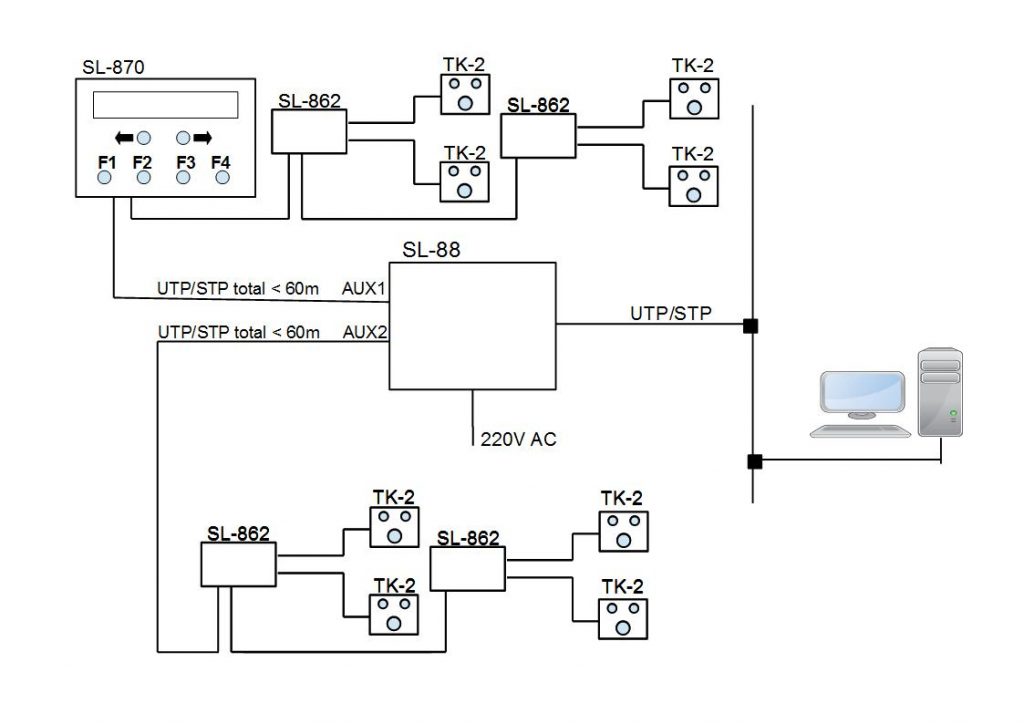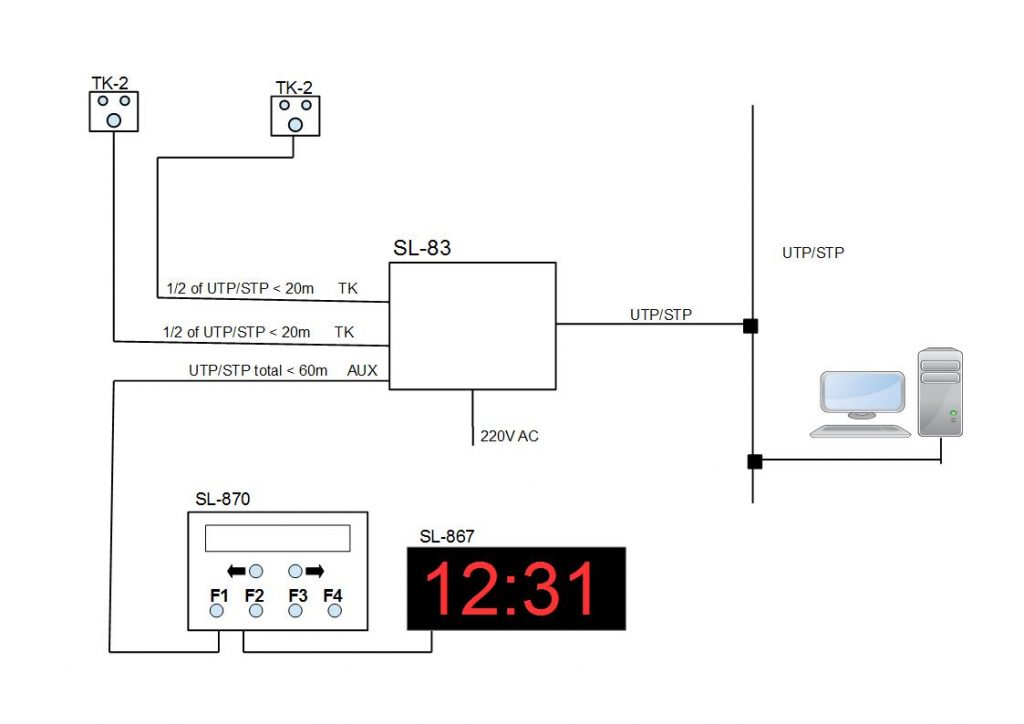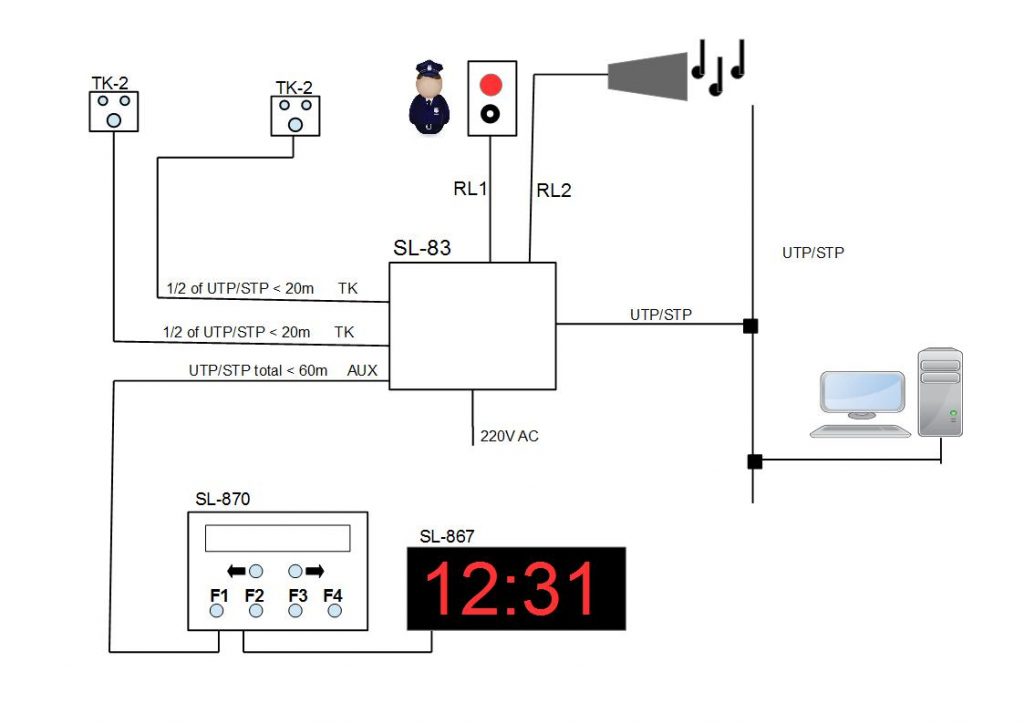Industrial T&A solutions usually have the following features:
-
- Most of the clockings happen at peak times when shifts begin/end
- Because of these “peak times”, it is important to have a fast throughput in employees/minute
- Most of the employees make only two kinds of clocking: IN and OUT
- There is usually a guard who can take action if random event output indicates a spot-search, breath-test etc.
- There is a need to generate jingle sounds to announce shifts, coffee breaks etc.
SL-88 controller with SL-870 and single-activity readers
If relay outputs are not needed for driving turnstiles, signalling random clocking events for spot-searches and breathalyzer tests and driving jingle speakers for announcing shifts and breaks, the SL-88 is a good choice.
One SL-870 terminal is usually enough for the smaller number of employees who make clockings other than IN/OUT, the rest being single-action readers (TK-2 iButton readers are shown, but they can be substituted by proximity readers without any change to the connections). These readers should be spread out and grouped so that the throughput can be as fast as possible. E.g. the IN readers on one side of the room, the OUT on the other. Throughput can be assumed to be 2sec for a clocking per reader.
SL-83/SL-84 with single-activity readers
For smaller companies or complexes with several mutually distant access points, the SL-83, with one IN and one OUT reader (throughput: 30 employees/min in one direction) or the SL-84 with two IN and two OUT readers (throughput: 60 employeees/min in one direction) is a good choice.
The AUX port can be used to optionally add a large clock display and/or an SL-870 terminal for situations where some employees need to make clockings other than IN/OUT.
SL-83/SL-84 with single-activity readers using relay outputs for spot-search alarms and/or jingle announcement
This configuration is similar to the previous one except for the use of one or two of the controller’s relay outputs:
- For signalling to security personnel to perform a spot-check or breath-test based on a clocking-generated random event, which causes a relay activation for a few seconds or until reset by a pushbutton. The controller is configurable regarding the probability a clocking will generate a random event and whether IN, OUT or both clockings can generate a random event
- For driving a factory-wide acoustic signalling system of jingles to announce shift and break start and end times
The SL-84 configuration would be similar but having 4 reader inputs and 4 relay outputs. If one wanted to distinguish between, say, one of two OUT clockings as the source of a random event, one would need two relays and two signal lamps for spot-searches.



